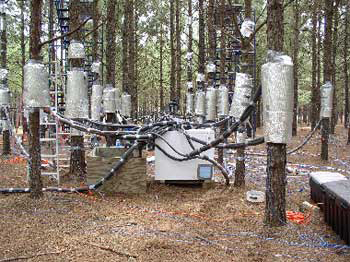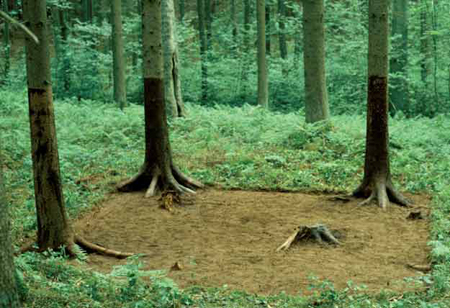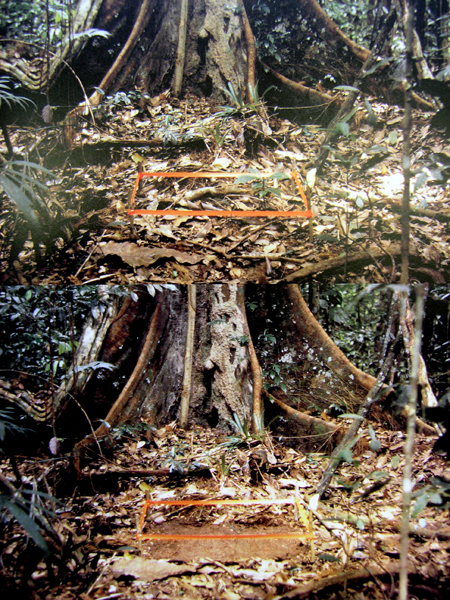Carbon Circulation
USDA Forest Service (FS) scientists have provided the first proof of concept for a method that allows researchers to study below-ground carbon allocation in trees without destroying them. In the latest issue of the journal Plant, Cell and Environment, Kurt Johnsen and fellow scientists at the FS Southern Research Station unit in Research Triangle Park, NC, describe a reversible, non-destructive chilling method that stops the movement of carbon into root systems.
The photosynthetic process of plants has been estimated to account for almost half of the carbon circulating in the Earth’s systems. Reliable data has been developed on carbon cycling in the above-ground processes of trees, but how much carbon is actually moved and stored below the ground has not yet been determined. Most methods to study below-ground processes involve destroying the roots as well as the mycorrhizal communities that live symbiotically with root systems.
Michael Sailstorfer
Waldputz (wood cleaning), 2000
Mark Dion
A meter of Jungle, 1992


